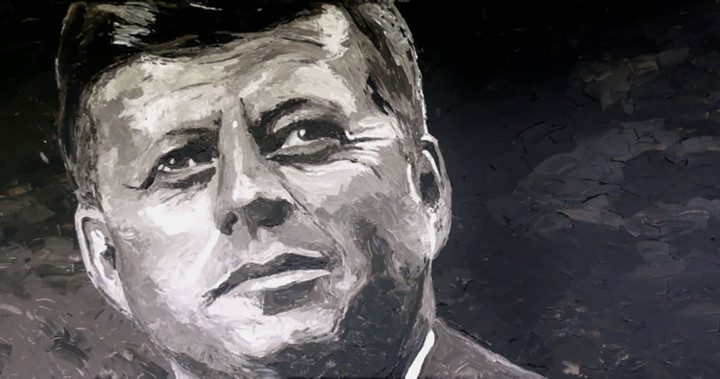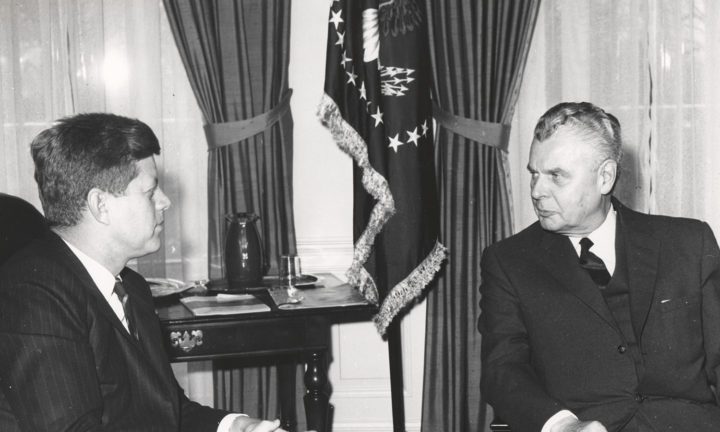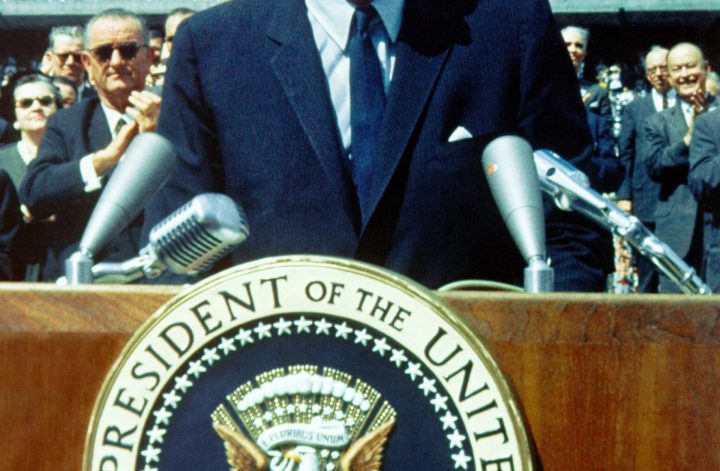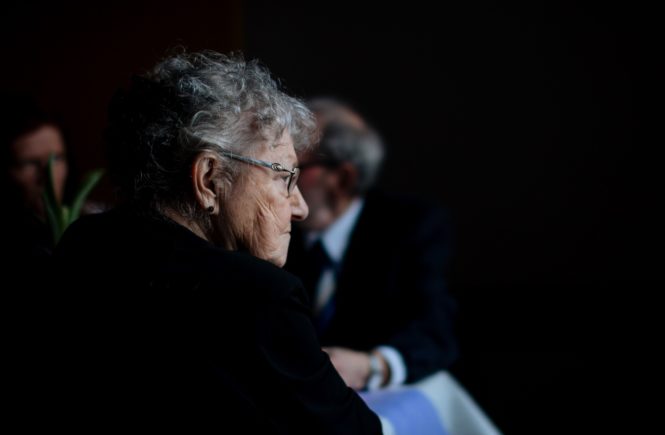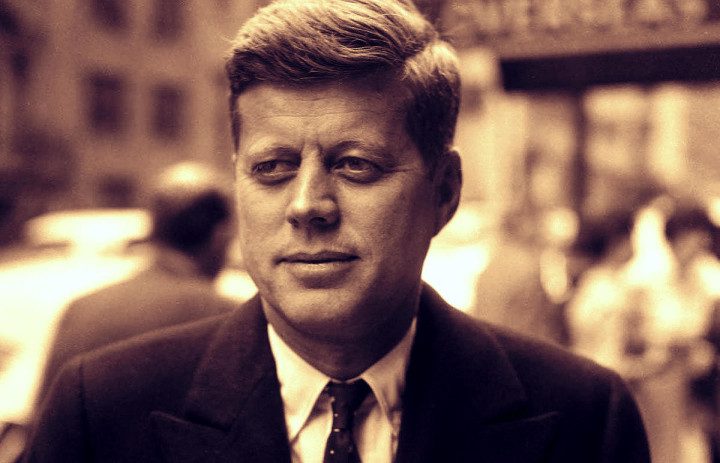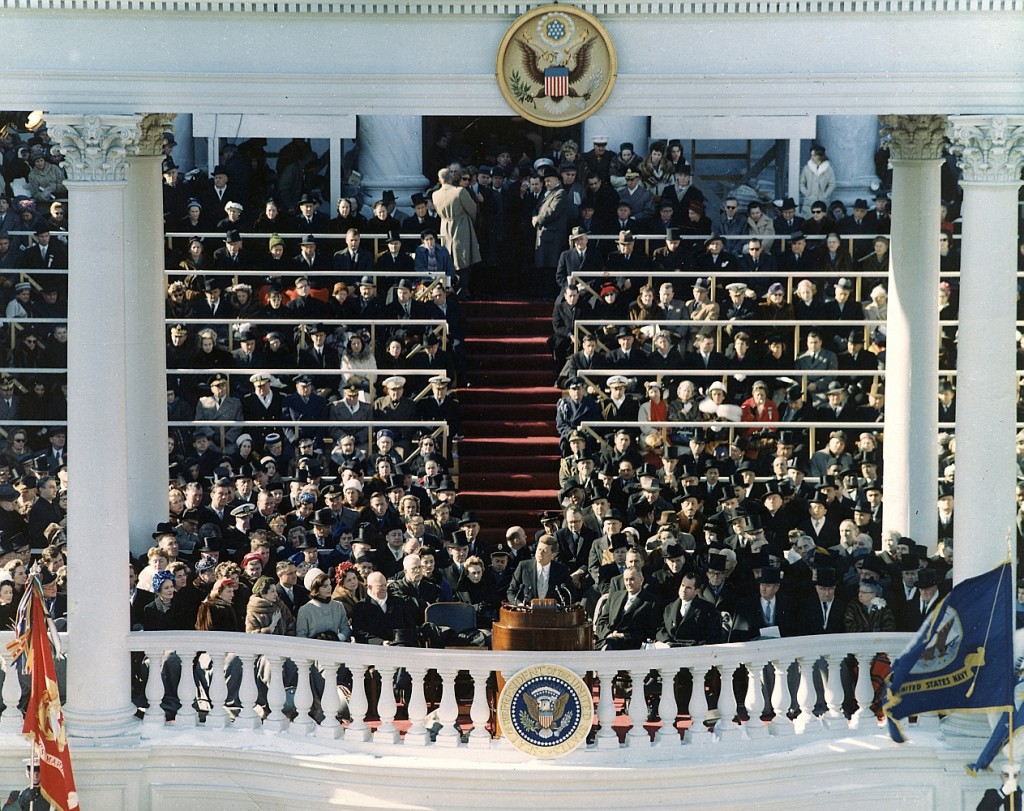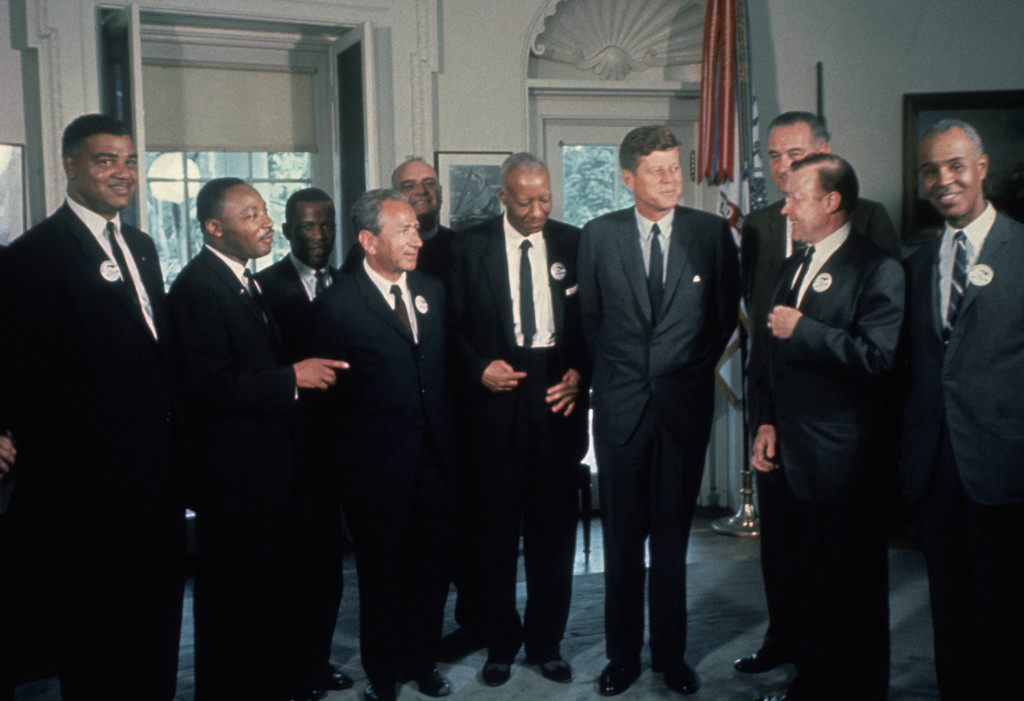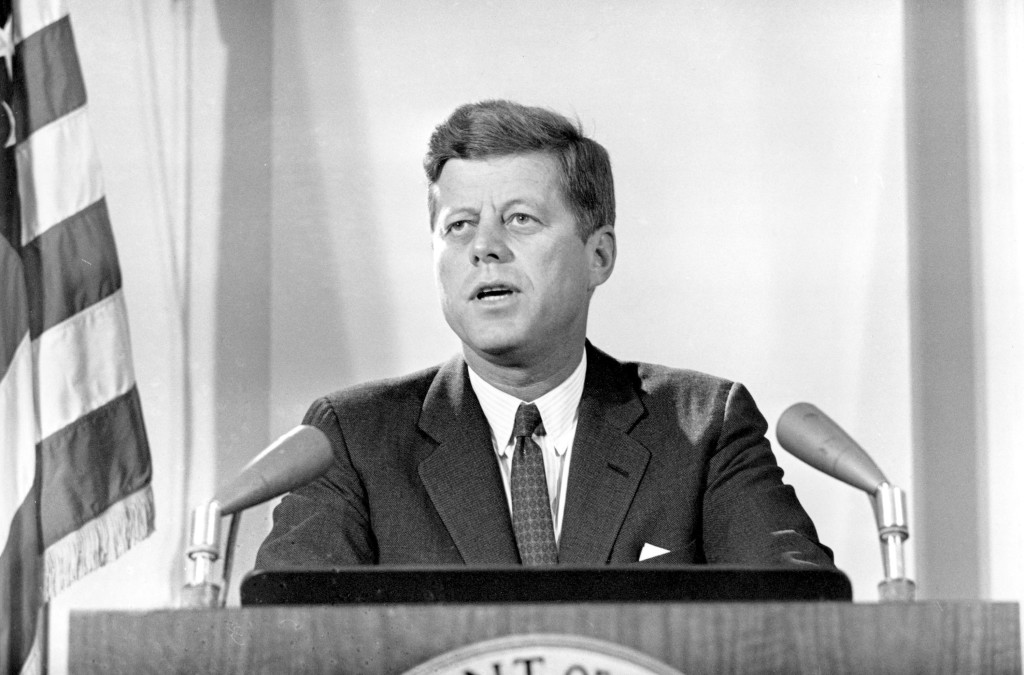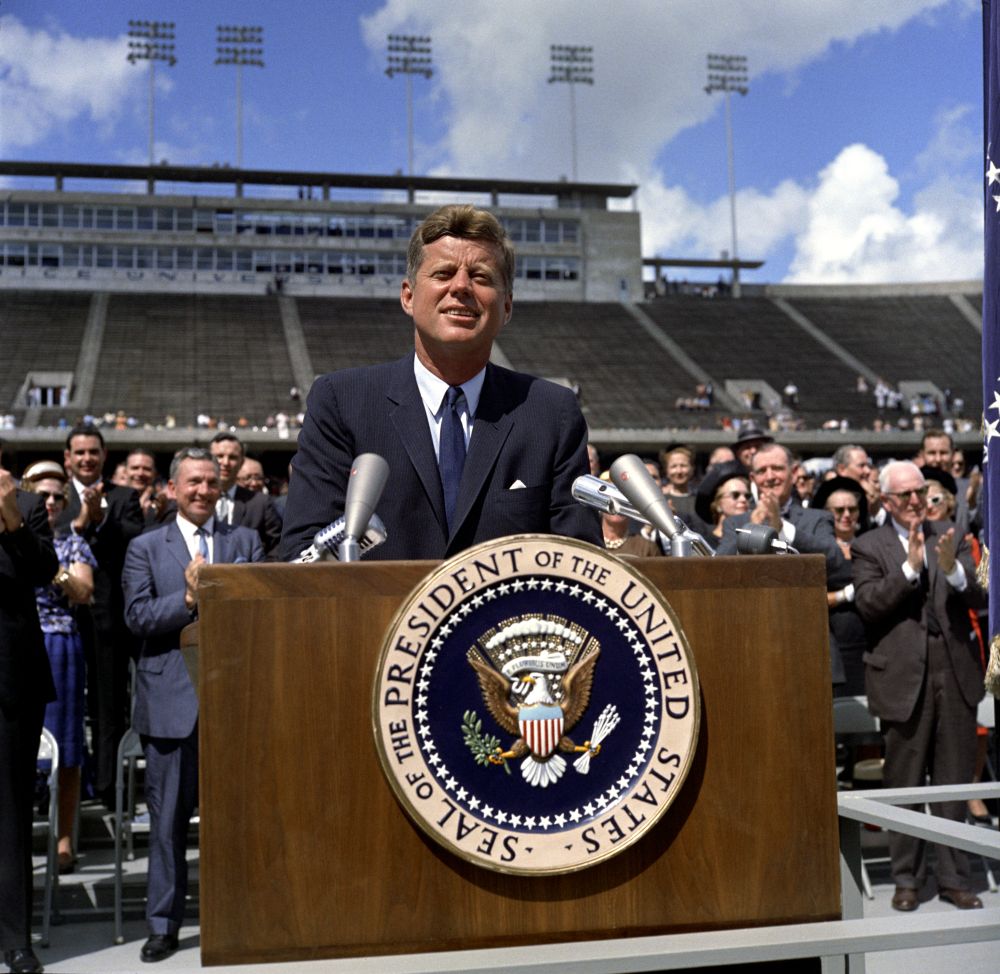John F. Kennedy was elected the 35th President of the United States in November 8, 1960. At the age of 43, he was the youngest ever elected U.S. president. Before he was assassinated in 1963, Kennedy negotiated the Nuclear Test-Ban Treaty, established the Alliance for Progress, initiated important reforms, and supported civil rights for African Americans.
Who was John Fitzgerald Kennedy?
John F. Kennedy was born on 29th of May 1917 in Massachusetts. In 1941, he joined the U.S Naval Reserve and served in combat as the commander of a Motor Torpedo Boat. This boat would eventually be damaged by a Japanese warship, but Kennedy managed to lead his surviving crew members to safety. For this accomplishment, he was awarded the Navy and Marine Corps Medal, which is the highest non-combat decoration for heroism by the U.S Navy. John F. Kennedy would then go to serve in the House of Representatives and the Senate before being elected as president. During his dramatically short stint at the Presidency, Mr. Kennedy had to address a number of serious foreign crisis (such as the Soviet Missile Crisis, and the Berlin Crisis). Kennedy was killed on November 22nd of 1963 in Dallas, Texas.
The Early Life of John F. Kennedy
John F. Kennedy was born in Brookline (a town in Massachusetts) to wealthy Irish Catholic families. His paternal grandad, P.J. Kennedy, was a very wealthy liquor businessman and banker. His maternal grandad, John E. Fitzgerald (also known as Honey Fitz) was a seasoned politician who had served in Congress, and as the Boston city mayor. Rose Fitzgerald, John F. Kennedy’s mother, was an upper-class young woman in Boston. His father, Joe Kennedy Sr., was a very prosperous banker who had made his fortune in the stock markets after the first world war. He was later appointed a chairman of the SEC (Securities and Exchange Commission), then ambassador to Great Britain.
The 2nd oldest of 9 remarkable siblings, John F. Kennedy was nicknamed “Jack”. His siblings included Robert Kennedy, a former Attorney General, Eunice Kennedy, who founded the Special Olympics, and Ted Kennedy, a powerful senator.
Their parents, Joe and Rose Kennedy, to a large extent, rejected the Boston socialites world in which they’ve been born so that they could focus on their children’s education. Joseph Kennedy specifically took charge over almost every detail in his children’s lives. This was extraordinary and not common with fathers of the time. Joseph Kennedy Sr. developed a unique interest in his kids and worked to instill a competitive fire in them. He enrolled his kids in sailing and swimming competitions and taught them to accept nothing but the first place.
John F. Kennedy Education
John Kennedy attended a Connecticut Catholic boys’ school – the Canterbury – where he was a poor student. When he decided to focus on something, he was however very brilliant. Notwithstanding his poor performance, Kennedy managed to continue to Choate – an established preparatory school in Connecticut. He was a typically mischievous boy who preferred girls, sports, and jokes over coursework. Kennedy was very bookish during his school days, only that he didn’t read the texts assigned by his teachers. He also often suffering from the flu, severe colds, scarlet fever, and even undiagnosed illnesses that made him miss school for months.
After Choate, Kennedy spent a semester at Princeton, before transferring to Harvard in 1936. He continued with his mediocre academic pattern here and only excelled in those classes he liked. His diversion of women and sports usually contributed to his bein*8g an average student. During his Harvard days, Kennedy was extraordinarily popular with his classmates. He was charming, handsome, and had this radiant smile. According to one of his old friends, Lem Billings, “Jack was more fun than anyone I have ever known…” Kennedy was also a womanizer.
Eventually, Kennedy became serious with his schoolwork and started to acknowledge his potential. By this time, his father was now the Ambassador to Great Britain. It is during a prolonged visit there (in 1939) that he decided to write a thesis on why the UK was unprepared to face Germany in a second world war. The paper was so popular that it was published as a book called Why England Slept after his graduation in 1940. It sold over 80,000 copies, which was incredible by all means.
Joining the U.S. Navy
John F. Kennedy enlisted in the Navy after graduating from Harvard. He was assigned commander in PT-109, a torpedo boat in the Southern Pacific. On 2nd August of 1943, his boat was hit by a Japanese destroyer chopped into two. Two sailors lost their lives, and Kennedy was seriously injured in the back. Nonetheless, he managed to lead the 10 surviving sailors to a nearby island, hauling one by his life vest strap. They were later rescued after 6 days. For his heroic conduct to save his crew members, he was granted the Navy and Marine Corps Medal. For injuries suffered, Kennedy was awarded the Purple Heart.
Kennedy’s older brother had also enlisted in the Navy as a pilot. Unfortunately, he died after his plane exploded on the August of 1944. This was a major setback for the family. Joseph Kennedy Sr. had always thought that his first-born son – Joseph Kenney Jr. – would one day be the president of the U.S. He was intelligent, athletic, handsome, and ambitious. John F. Kennedy took upon himself his family’s hopes for his older brother.
John F. Kennedy’s Political Journey
Upon exit from Naval service, John Kennedy did a brief stint as a reporter for the Hearst Newspapers. In 1946, he ran for office in the House of Representatives. He was 29 years old. Boosted by his war-hero status, his father’s money and his family connections, Kennedy won quite easily. He served 2 three-year terms between 1946 and 1952. Given that he had just served in the Navy, Kennedy found his Congress work incredibly dull.
In 1952, he decided to seek greater influence by challenging incumbent Republican senator Henry Cabot for his Senate seat. Kennedy was again propelled by his father’s immense financial resources. He hired his younger sibling Robert to be his campaign manager, who pieced together a scientific, methodical, and thoroughly detailed state-wide campaign. John F. Kennedy won by a narrow majority. His personality was a major contributing factor. John F. Kennedy was seen as a dignified, well-educated, gentlemanly and intelligent figure – just what voters were looking for.
Shortly after being elected in the Senate, Kennedy met Jacqueline at a dinner party. On September 12 of 1953, they got married. They had three kids together – Caroline, John Kennedy Jr., and Patrick.
During his political career in the U.S. Senate, John Kennedy continued suffering from frequent illnesses. When he was recovering from a surgery, he co-authored a book titled ‘Profiles in Courage’. It highlighted 8 senators who took courageous yet unpopular stances. The book won the Pulitzer Prize for biography in 1957. To this date, Kennedy has been the only U.S. president to ever win a Pulitzer.
Road to the Presidency
Kennedy’s 8-year career in the Senate was quite undistinguished. In 1956, he was ALMOST chosen as the running mate to the Democratic candidate– Adlai Stevenson. Four years later, on January 2nd, 1960, he announced his own candidature for the office of president of the United States. He managed to defeat his main challenger in the democratic primaries – Hubert Humphrey – and selected Lyndon Johnson – the Senate majority and senator from Texas – to be his running mate. The presidential race was an uphill battle against his republic rival – Richard Nixon. Mr. Nixon had been the vice-president for two terms under the well-approved leadership of Dwight D. Eisenhower.
John F. Kennedy offered voters with a young and energetic replacement to Richard Nixon. He benefited greatly from the first ever TV-aired presidential debate in history. In the November election, he won by a small margin, becoming the first-ever Roman Catholic and the youngest man to be duly elected president of the U.S.
Accompanied by his beautiful wife Jacqueline and their two children (Caroline and John Jr.), Kennedy brought a distinctive glamour and youthfulness to the White House. He challenged Americans to team up in their pursuit of progress. The closing words in his inaugural speech have been famous ever since – “Ask not what your country can do for you; ask what you can do for your country.”
John F. Kennedy Presidency and Leadership
Kennedy oversaw the launching of the Peace Corps within his first year in office. This essentially allowed young volunteers from the U.S. to travel to underdeveloped countries worldwide.
During his political career, Kennedy was not able to achieve much with two of his biggest priorities – income tax cuts and the civil rights bill. He was quite slow to commit himself to the civil rights cause, but eventually took action when he sent federal troops to support desegregation at the University of Mississippi. In the following summer, he also announced his plan to create a comprehensive civil rights bill. Kennedy also endorsed the huge March on Washington that was led by Martin Luther King Jr.
John F. Kennedy Major Foreign Policy Challenges and Victories
In April of 1961, John Kennedy approved a plan to move over 1400 Cuban refugees (who were apparently trained by the CIA) to the Bay of Pigs. The plan was to have them trigger a rebellion in the communist country, and overthrow Fidel Castro’s communist leadership. The entire mission failed terribly, with almost all the exiles killed or captured.
In the June of 1961, Kennedy sat down with Nikita Khrushchev, the Soviet leader, to discuss the situation in Berlin. The city had was literary divided into two following World War II. Two months after the Vienna meeting, troops from East Germany started building a wall dividing the city. President Kennedy sent a military convoy to inspirit West Berliners that they had his nation’s support, and later delivered a famous speech in West Berlin.
Kennedy would crash with Khrushchev again in October of 1962. The U.S. learned the Soviets were building nuclear missile installations in Cuba that posed a direct threat to the U.S. Kennedy immediately announced a blockade of Cuba by the navy. This tense standoff lasted almost two weeks. Eventually, Khrushchev dismantled the missile installations in Cuba, in exchange for the U.S. agreeing not attacking Cuba, and removing its missiles in Turkey.
In July of 1963, John F. Kennedy secured his biggest foreign policy victory yet when he convinced Khrushchev and the Prime Minister of Britain to sign a nuclear tests ban treaty.
The Assassination of John F. Kennedy
On 22nd November 1963, John Kennedy and the first lady landed in Dallas, Texas. A day earlier, he had addressed crowds in Austin, San Antonio, and Fort Worth. Kennedy’s motorcade left the airfield and traveled to Dallas Trade Mart, where he was scheduled to speak next.
A few minutes after 12:30 in the afternoon, Kennedy’s motorcade was moving by downtown Dallas when shots rang out. Kennedy was hit in the neck and the head and pronounced dead at a close-by hospital. Lee Harvey Oswald, a 24-year old who was a communist sympathizer, was apprehended for the assassination. He was shot days later by a nightclub operator while he was being taken to jail. Conspiracy theories of the Kennedy assassination sprung up almost immediately. These were fueled by the Mafia, the KGB, and the military-industrial complex, and other entities. A commission of inquiry led by Earl Warren (the Chief Justice) however concluded that Lee Harvey Oswald acted alone.
New Information on the Assassination of John F. Kennedy
On 26th October 2017, the Donald Trump administration authorized the release of over 2800 records on the John Kennedy assassination. This came after a 25-year wait duration signed into law back in 1992. It allowed declassification of documents just provided doing so wouldn’t hurt military operations, intelligence, or foreign relations.

